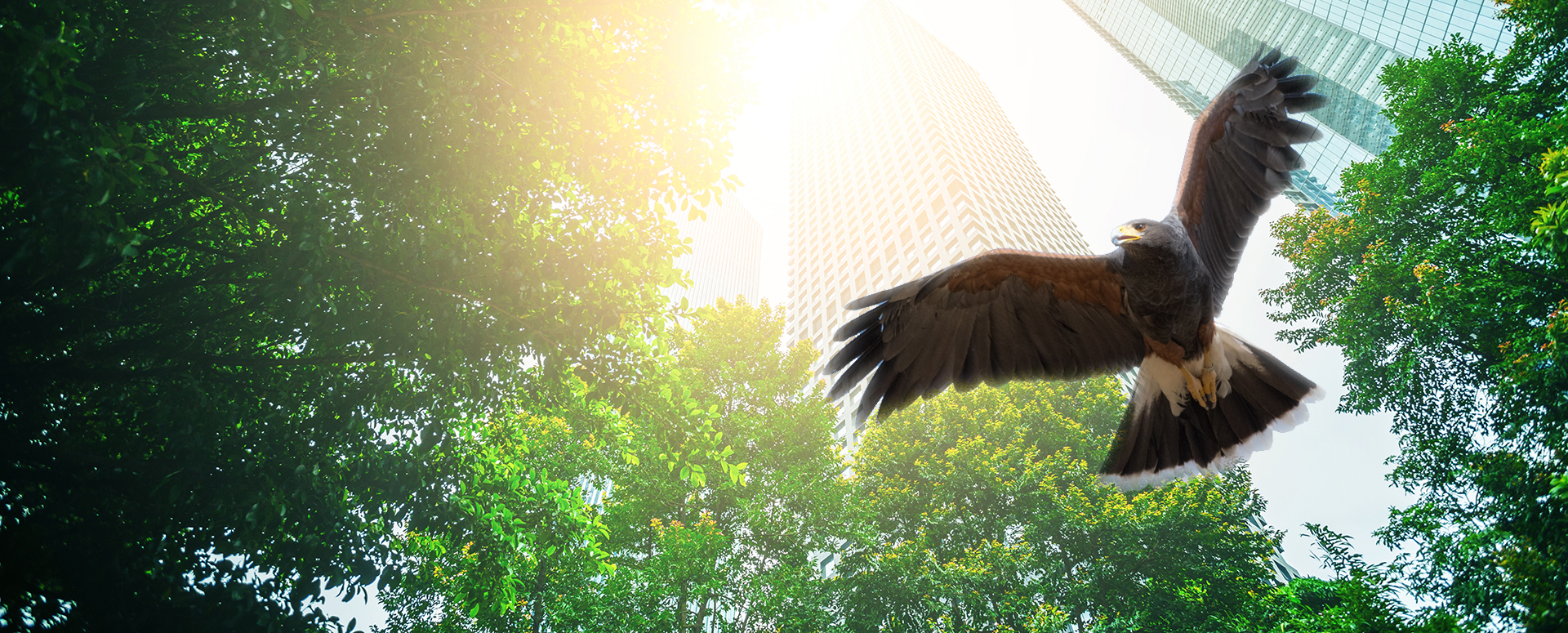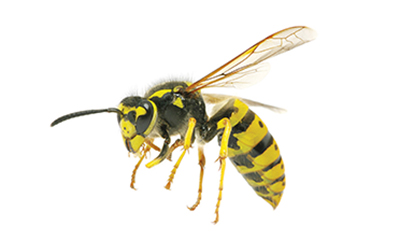
COMMERCIAL & DOMESTIC PEST CONTROL
 Wasps are classified under the order Hymenoptera, which means membraneous wings. All the stinging insects belong to this group and they are a highly evolved group of insects. There are a number of Wasps that live in Wasps nests in the UK. They all have complex social structures and ways of doing things. However they all share a common aim to survive as a species.
Wasps are classified under the order Hymenoptera, which means membraneous wings. All the stinging insects belong to this group and they are a highly evolved group of insects. There are a number of Wasps that live in Wasps nests in the UK. They all have complex social structures and ways of doing things. However they all share a common aim to survive as a species.
Appearance
Large, conspicuous buzzing insects with yellow and black striped, wasp-waisted bodies, which are 10-15mm long. They have a sweet tooth at one end and a painful sting at the other.
Characteristics
The queen wasp is larger than normal wasps (about 20mm) and she hibernates over winter, making a nest in the spring in which to lay her eggs. She feeds the grubs on insects until they develop into worker wasps, three to four weeks later. Workers, all sterile females, forage for over a mile in search of food. At the end of the year when the colder air arrives, and any fruit that has been edible starts to perish quickly, wasps start to starve as food becomes increasingly hard to find. The adult worker wasps start to die off and the new queen wasps go into hibernation, and emerge in the spring to start the process again, building completely brand new nests. One nest may produce 30,000 wasps in a year.
Diet

Do you have something like this in your loft?
It's a wasp nest!
Natural pest controllers, wasps tend to eat other insects. However at their peak in August and September with the youngsters reared, the workers turn to the sweet food they prefer and become a nuisance wherever this is available.
Habitat
Common Wasps, generally build their nests inside something, this can be a roof space/loft, garden shed, inside an air brick or even in the ground. Other Wasps build their nests in bushes, trees, hedgerows and even underground. Basically they build their nests anywhere that they find suitable and where it is protected from the elements and is undisturbed. They build their nest itself using chewed wood and saliva to make a papier mache material. The nest material is strong, lightweight and surprisingly waterproof.
 One of the most feared and aggressive pests, wasps will attack and sting, sometimes unprovoked but usually if threatened. This is risk and a cause for concern if you have small children or pets as for some wasp stings can be very dangerous causing severe reactions, with several people dying from wasp stings every year.
One of the most feared and aggressive pests, wasps will attack and sting, sometimes unprovoked but usually if threatened. This is risk and a cause for concern if you have small children or pets as for some wasp stings can be very dangerous causing severe reactions, with several people dying from wasp stings every year.
 If customers experience a high level of Wasp activity at your premises, then they are likely to complain and request a refund, report on your company negatively potentially resulting in a loss of future income.
If customers experience a high level of Wasp activity at your premises, then they are likely to complain and request a refund, report on your company negatively potentially resulting in a loss of future income.
How to get rid of Wasps:
Treating a wasp nest can be very dangerous. Wasps inside the nest will feel threatened and often become aggressive. This could cause them to sting you and others as they defend their nest and young.
To get rid of wasps you do ‘not' need to remove the nest, but you do need to treat it. For treating a wasp nest make sure you use a trained professional for safety reasons. Therefore we strongly recommend you contact a professional pest control company such as ourselves. A trained professional will have the technical knowledge and access to a range of professional use insecticides which are not available to the public.
Even if you think your Wasps nest is in an inaccessible height, professional pest control companies will have the tool to reach and treat the nest.
